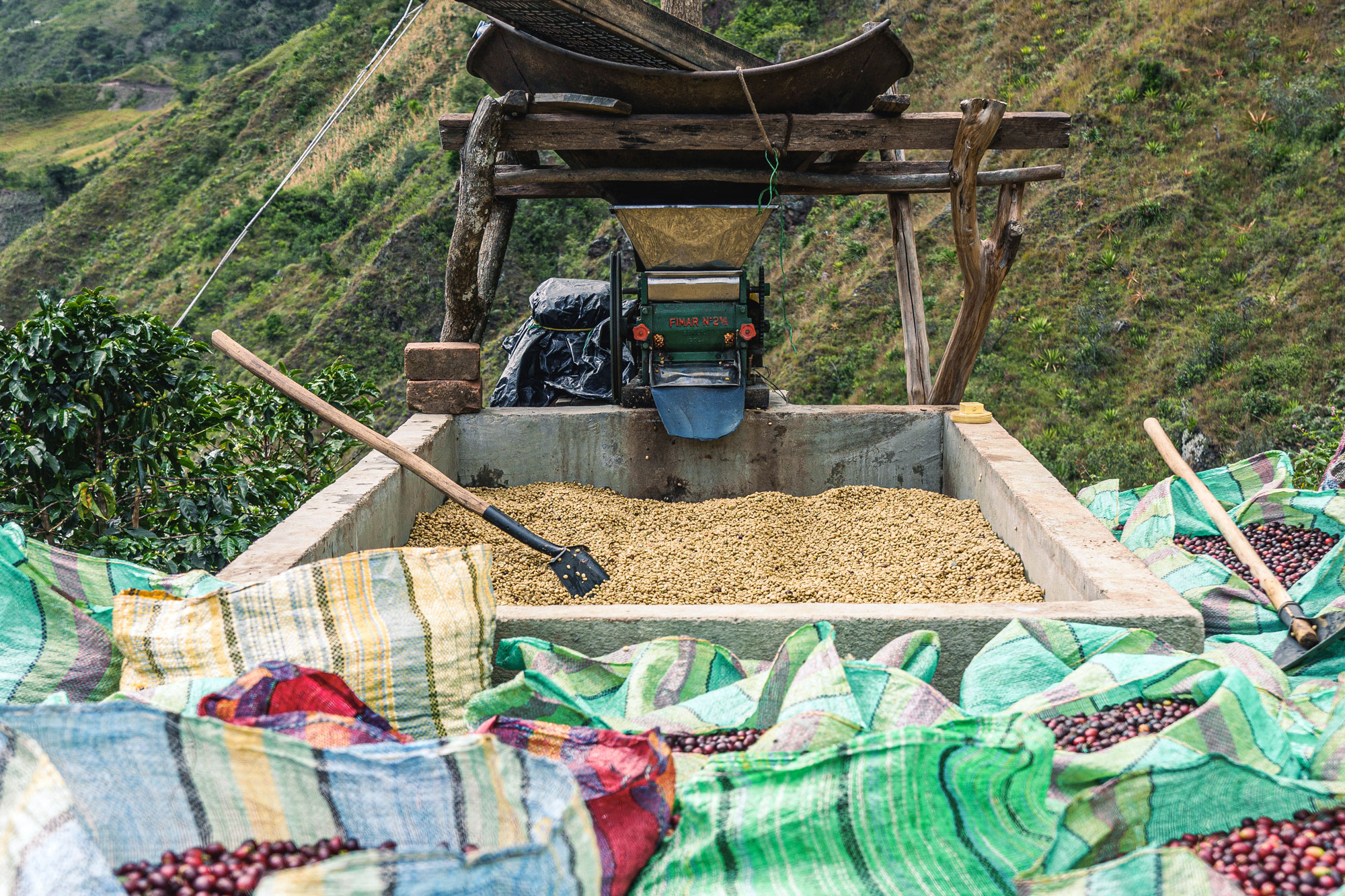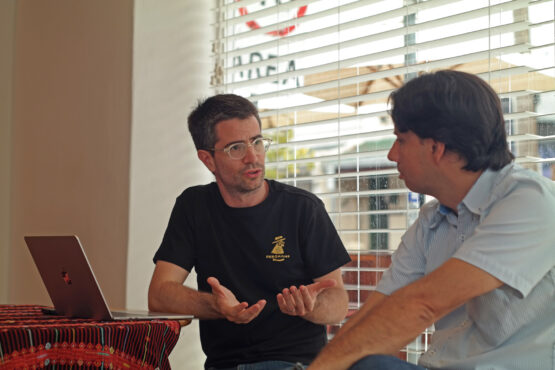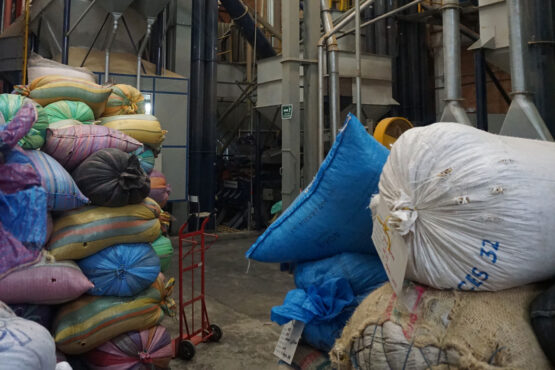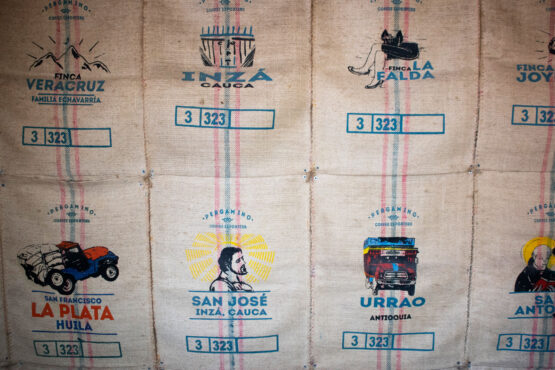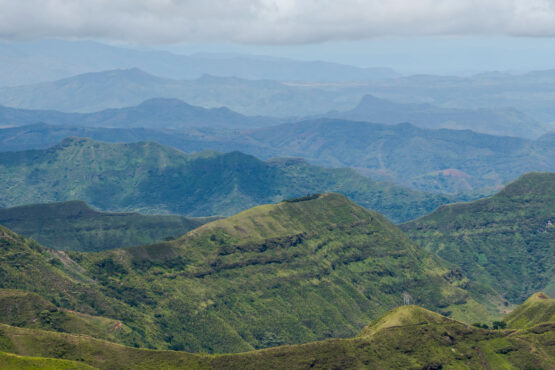It’s time to plan for Colombia!
Published 30 Jul 2024
With outstanding quality, versatility and year-round availability — together with exceptional traceability from our supply partners, Pergamino — Colombian coffees play a hugely important role in our offer list. Over the past few weeks, our team has been busy in the cupping room tasting through fresh-crop offers for our next shipment from Colombia and selecting delicious, diverse coffees to feature on our line up.
In preparation for purchasing, we recently caught up with our good mate and Pergamino’s Managing Director, Pedro Echavarría, to learn more about what’s happening on the ground. Read on for insights into how Colombian farmers are currently managing production, after almost three years of challenging climate conditions, low yields and volatile pricing.
To say that Colombian coffee farmers have faced a difficult few years is an understatement: following back-to-back La Niña weather events in 2021 and 2022, resulting in excessive rains that led to poor flowering and low yields, 2023 was declared an El Niño year — heralding increased sunshine and dry weather across the country. While the effect was, ultimately, not as long or intense as initially predicted, it did result in drought-like conditions across the country, causing challenges and obstacles for most of the population (including water reserves dropping to worryingly low levels in major cities like Bogotá).
For coffee producers, the dry heat led to a good flowering in late 2023, leading to an increase in yields for the 2024 main crop (which is currently ongoing in Nariño, and will start around September in Antioquia, Huila and Cauca) and an overall positive feeling amongst farmers and exporters. There is a flipside to El Niño’s positive effects, however: higher ambient temperatures and excessive sunshine can lead to the early ripening of immature coffee cherries and can increase the likelihood of fruit damage due to berry borer beetle, which are more active in the heat.
In both cases, the result is underdeveloped and damaged seeds that must be thoroughly sorted out of a specialty grade lot, affecting the conversion from fresh cherry to dried parchment, and again to milled green coffee. Not only does it take more cherry for a farmer to produce a carga (125kg) of dried parchment (which is sold to an exporter), but exporters also need more parchment to prepare clean and exportable coffee lots. In an average year, it takes around 90kg of parchment to produce a 70kg sack of milled green coffee. From the most recent harvest, it required almost 110kg of parchment to produce the same amount, slowing down operations at the milling stage and leading to an overall increase in cost of production.
For Pergamino, the focus remains on paying allied farmers fair and prosperous premiums for great quality coffees — despite recent surges in the global price of coffee creating “extra noise,” as Pedro puts it, in Colombia’s internal market. The result of fluctuating prices is often an interruption in supply, as producers will hold back from selling their parchment stock, while they wait to see if the price will rise further. The current volatility of the Colombian Peso has also exacerbated the situation and created more hesitancy amongst producers, who are unsure if the price they are being offered is affected by C-market or a result of the Peso dipping in value, resulting in confusion and distrust when buyers approach them.
Pergamino have been able to navigate these complications by investing in long-lasting and committed relationships with the producers they work with. To further streamline their sourcing, the team has strengthened their logistical operations in Cauca, Nariño, Tolima and Huila by expanding and resourcing their local QC teams and warehouses. For us in Melbourne, this means our access to exceptional, fully traceable coffee lots (both single estate and regional blends) from small, independent producers remains as reliable as ever, regardless of climate events or internal market fluctuations.
For the current round of purchasing, we are looking for bright, sweet and clean coffees that have a distinct taste of place. For the line up, with selected outstanding single estate lots and small producer regional blends from Tolima, Cauca, Nariño, Huila and Antioquia — including from the micro-region of Urrao, which has stabilised after recent social unrest.
We’re also thrilled to be sourcing our first ever decaffeinated offering, after recent technical advances in ethyl acetate processing have improved the quality and traceability of these lots. We’ve been chatting with Pergamino about this project for months and are confident we can offer a decaf option with good physical attributes and a delicious flavour profile, sourced with transparent and responsible business practices. This lot is limited in volume, so let us know now if you’re keen to taste a sample or secure some bags!
Now is a good time to let us know if you’re keen for a particular lot from Colombia! Whether you would like to feature a lot from a particular producer or farm that you have loved in the past, or to brief us in on your preferred flavour profile, regional characteristics or intended volumes — communicating your requirements ahead of purchasing helps us to accurately gauge demand for the year and is the best way to secure the coffees you love! The coffees we select now will sail in September, with expected arrival around October-November.
We can’t wait to have more Colombian coffees back on the list! Get in touch anytime to plan your line up — we’re here to help.
